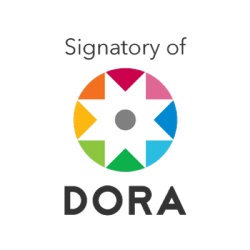The interest of principal component analysis for anthropological research of digital dermatoglyphs: Case of some Algerian and Mediterranean populations
Abstract
Principal component analysis (PCA) is a powerful tool for compressing and synthesizing information in the processing of quantitative data from multivariate analysis. It is used in this study to help explore variations in digital dermatoglyphic patterns within some Algerian and Mediterranean populations as part of anthropological research. The PCA carried out in the male sex shows that the first axis, separates the North African populations on the side of the positive abscissa to which are added Andalusia with more whirlpools, and the other populations of the North of the Mediterranean on the side of the negative abscissa with more arcs (and ulnar loops for the female sex). The second axis clearly contrasts the populations of the South of the Mediterranean on the side of the positive ordinates with more vortices, and the populations of the North of the Mediterranean on the side of the negative ordinates with more radial and ulnar loops. The Algerian populations are close to each other and close to Tunisia and Andalusia (and Libya for the female sex). The affinity recorded between these populations can be explained by the cultural, anthropological, geographical mixing that has affected these regions over time.
Downloads
References
Adda Neggaz, L. (2017-1018). Anthropo-genetic characterization of molecular markers in populations from Western Algeria: Digital dermatoglyphics, Duffy system. Thesis with a view to obtaining a Doctoral Degree, Mohammed Boudiaf University-Oran.
Aireche, H., & Benabadji, M. (1994). Gene frequencies in the ABO system, Pet Lutheran in Algeria. TCB 3, pp. 279-289.
Arnai-Villena, A., Martinez-Laso, J., & Alonso-Garcia, J. (1999). Iberia: population genetics, anthropology and linguistics. Hum Biol Oct (71), 725-743.
Bozicevic, D., Milicic, J., N'dhlowu, J., Pavicic, D., Rudan, P., & Vassalo, A. (1993). Dermatoglyphics traits in the Malta population. Anthropol A7, pp. 137-146.
chaabani, H., & Cox, D. (1988). Genetic characterization and origin of Tunisian Berbers. Hum Hered 38, 308-316.
Chamla, M. (1971). Biological anthropology. Presses Universitaires de France, pp. 32-34.
Chamla, M. (1961). The fingerprints of 2,336 Algerian Muslims. Anthropology, 444-466.
Cummin, H., & Midlo, C. (1943). Finger prints, palms and soles, an introduction to dermatoglyphics. The Blakiston company, Philadelphia.
Cummins, H., & Midlo, C. (1926). Palmar and plantarepidermal ridge configurations (dermatoglyphics) in European-Americans. American journal of physical anthropology 9(4), 471-502.
Duby, C., & Robin, S. (2006). Principal component analysis. National Agronomic Institute, Paris-Grignon, 80.
Durham, N.M., & Plato, C. (1990). Trend in Dermatoglyphic research. Boston London: Kluwer Academic Publishers p 6.
Falco, G. (1917). Sulle papillary figure of popatrelli dell nei Libici. Revista Anthropologia 22, 91-148.
Faulds, H. (1880). On the skin furrows of the hand. Nature 22, pp. 574-605.
Fuster, V., & Cabello, M. (1985). Digital dermatoglifos in a population of the Sierra de Gredos. Actas IV Cong. Esp. Anthro. Biol. Barcelona, Spain.
FusterM.J. (1985). Digital dermatologists in a population of the Gredos mountain range. Actas IV Cong. Esp. Anthro. Biol. Barcelona, Spain.
Galton, F. (1892). Finger prints: Macmillan and Company.
Guerrien, M. (2003). The interest of principal component analysis (PCA) for social science research. Notebook of Latin America, 181-192.
Harich, N., Esteban, E., Chafik, A., Lopez-Alomar, A., Vona, G., & Moral, P. (2002). Claddica polymorphism in Berbers from Middle Atlas: genetics, geography and historical evidence in the Mediterranean peoples. Ann Hum Biol 29, pp. 473-487.
King, D., Mancini-Marie, A, B., Walker, E., Meney, & MJ, LD (2009). Prenatal maternal stress from a natural disaster predicts dermatoglyphic asymmetry in humans. Development and psychopathology 21(2), 343-353.
Malpighi, M. Cited from Belloni L Opere scelte di Marcello Malpighi, Tipografia Torinese Spa. Turin 75-99.
Moreno, P., & Pons, J. (1985). Dermatoglifos digitales y palmares en inhabitantes de Menorca. Act IV Cong Esp Anthro. Biol. Barcelona, Spain.
Mortad, N. (2007-2008). Anthropogenetic (socio-cultural-genetic) characterization of the population of Msirda based on the analysis of the polymorphism of dermatoglyphs and blood groups (ABO, Rhesus, MNSs and Duffy) - Comparative analysis on a Mediterranean scale. Master's thesis: Aboubekr Belkaid University - Tlemcen- Algeria.
Naffah, J. (1974). Dermatoglyphics and flexion creases in the Lebanese population. Am.J.Phys.Anthrop 41, 391-410.
Oyhenart, M. (1985). Approach to the dermatoglific description of the Espanoles del SudOeste: Extremenos y Andaluces béticos. Tesis Doctoral, Fac Biologia, Univ de Barcelona, Aspana.
Penrose, L. (1968). Memorandum on dermatoglyphics nomenclature. Birth defects. Series IV/3, 1-13.
Pereira da Silva, M.A. (1971). Heredity of dermatoglyphs: digital dermatoglyphs. Bulletins and Memoirs of the Anthropological Society of Paris XII Series Volume 7, pp. 263-280.
Pichard, J., Hebrard, J., & Chillard, P. (2004). A simple means of identification: the fingerprint. Organic. Hum and Anthropol, 33-40.
Pons, J. (1952). Dermopapilary impressions in Barcelona university students Trab. Inst. Bernardino de sahagun 13, 87-129.
Portabales, M. (1983). Dermatogifos en la poblacion de la Alcalrria (Guadalajara): Digital configurations. Bowl. of. the Soc; Esp. de anthropologia Biologica 4, 41-50.
Purkinje, J. (1823). Commentatio de examiner physiologico organi visus: Vratislaviae. Junk.
Reed, T., & Meier. (1990). Taking dermatoglyphic prints. American Dermatoglyphics Association.
Sabir, B., Cherkaoui, M., Baali, A., Hachri, H., Lemaire, O., & Dugougon, J. (2004). Digital dermatoglyphics and ABO, Rhesus and Kell blood groups in a Berber population of the High Atlas. Anthropo 7, pp. 211-221.
Salmo, T. (2007). Recording of dermatoglyphs or fingerprints. Science and culture, Bimonthly Bulletin No. 408, 99-104.
Stafford, J., & Bodson, P. (2006). Multivariate analysis with SPSS. University of Quebec Press.

This work is licensed under a Creative Commons Attribution-NonCommercial 4.0 International License.




















